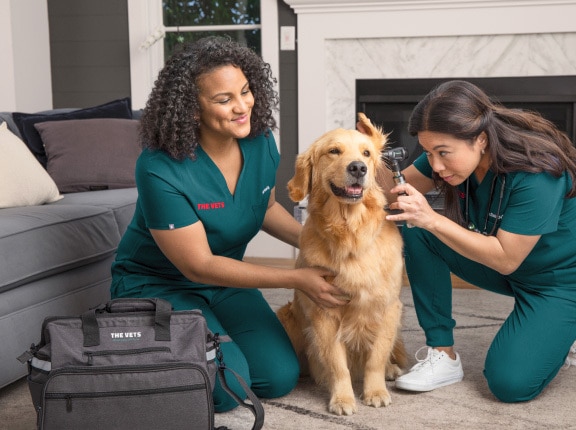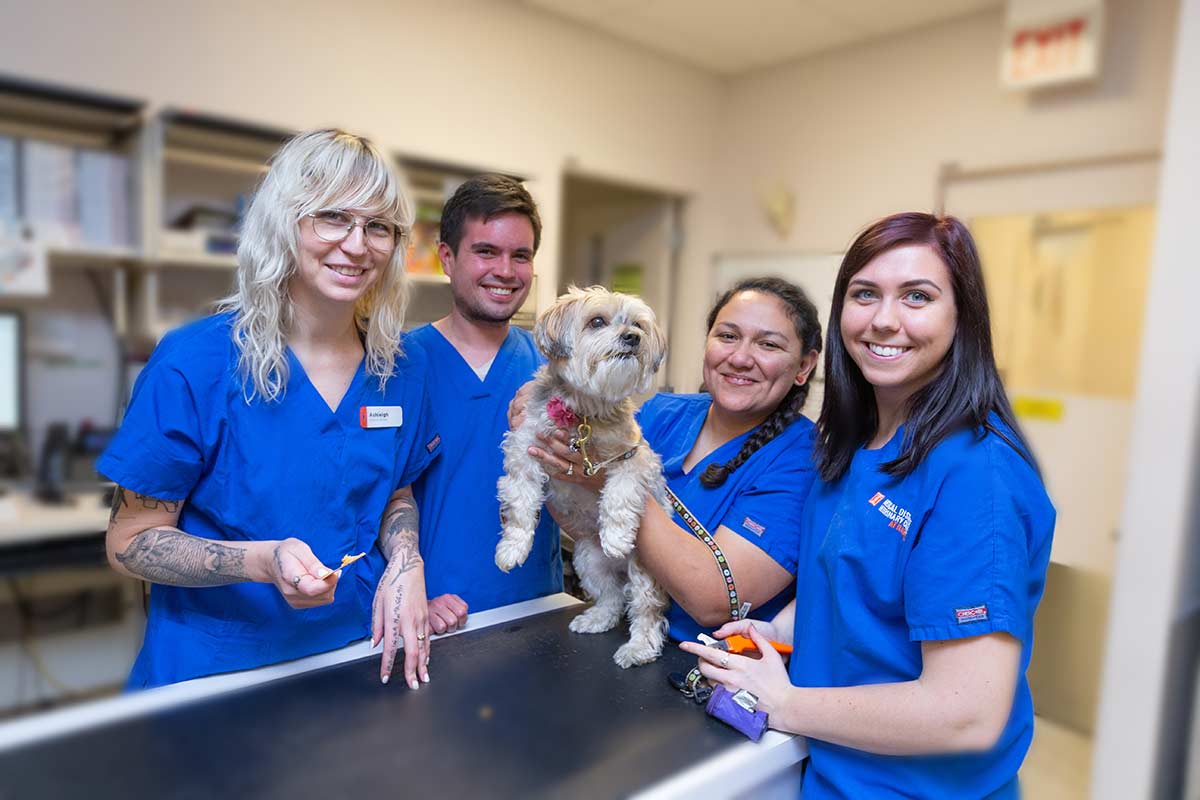Best Diet and Pain Relief Tips Post- tplo surgery for dogs
Best Diet and Pain Relief Tips Post- tplo surgery for dogs
Blog Article
All Concerning Veterinarian Surgical Procedure: Comprehending the Significance of Expert Treatment for Your Family pets
Vet surgical procedure is a vital component of pet dog healthcare. It encompasses various procedures, from routine optional surgical procedures to urgent treatments. Understanding the complexities of these surgical procedures can aid family pet proprietors make educated choices. The prep work, implementation, and healing phases are important for ensuring the wellness of animals. With proper understanding, proprietors can navigate the intricacies of vet care. What variables should be taken into consideration prior to a family pet undertakes surgical treatment?
Sorts Of Veterinarian Surgeries
When an animal requires medical intervention, recognizing the numerous kinds of vet surgical treatments can aid family pet owners make educated decisions. Veterinary surgeries can be broadly categorized right into 3 primary kinds: optional, urgent, and emergency situation surgeries. Elective surgical treatments, such as spaying or neutering, are intended treatments that are not instantly deadly. Urgent surgical treatments, like those for international body elimination, have to be done soon yet are not deadly in the moment. Emergency situation surgical procedures, such as those attending to extreme trauma or internal bleeding, are essential and call for prompt attention.Additionally, surgical procedures can differ in intricacy, varying from minimally invasive laparoscopic treatments to more comprehensive open surgical treatments. Each kind of surgical procedure carries its very own dangers and recuperation processes. Recognizing these groups allows pet dog proprietors to participate in meaningful discussions with veterinarians, leading to much better results for their precious pet dogs.
Planning for Your Animal's Surgery
Planning for a family pet's surgery entails a comprehensive list to assure all basics are covered. Efficient interaction with the veterinarian is crucial for recognizing the procedure and any type of needed pre-operative actions - canine tplo surgery. Furthermore, having clear post-operative care guidelines will help proprietors provide the very best support for their recovering pet dogs
Pre-Surgery List Fundamentals
Assuring a smooth medical experience for an animal requires mindful preparation and interest to information. A pre-surgery checklist is vital for pet owners to follow. First, confirming the scheduled surgical treatment day and time is important. Owners ought to additionally confirm that their family pet has not eaten according to the veterinarian's instructions, typically for 8-12 hours before surgery. Collecting essential clinical records, consisting of inoculation background, is necessary for the veterinarian's testimonial. It is additionally advisable to prepare a comfy space at home for the animal's healing after surgery. Proprietors must have a plan for transport to and from the vet center, making certain that the family pet is secure and comfy throughout the trip. Complying with these steps can significantly boost the medical experience.
Interacting With Your Vet

Effective communication with the vet is important for an effective medical experience for pet dogs. Owners must be prepared to discuss their pet dog's medical background, including any kind of pre-existing conditions, medicines, and allergic reactions. This information assists the vet evaluate risks and customize the surgical plan appropriately. Additionally, pet proprietors ought to ask questions relating to the treatment, anesthetic, and anticipated outcomes to assure they totally understand the process. Making clear any uncertainties can relieve stress and anxiety for both the animal and the proprietor. It is additionally essential to interact any behavioral changes or issues observed in the animal leading up to the surgery. Ultimately, clear discussion fosters trust and collaboration, ensuring that animals receive the finest possible treatment throughout their surgical trip.
Post-Operative Care Instructions
After reviewing the operation with the veterinarian, pet dog owners need to concentrate on post-operative treatment guidelines to facilitate a smooth recuperation for their pet dogs. These guidelines typically consist of checking the surgical site for indicators of infection, such as inflammation or discharge. Animals might require to be maintained tranquil and restricted to avoid extreme motion that can interrupt healing. Discomfort management is vital, so owners need to comply with the veterinarian's support on administering medications. In addition, dietary constraints might be suggested to stay clear of stomach distress. Regular follow-up consultations are very important to ensure proper recovery and resolve any type of problems. By sticking to these post-operative care instructions, pet dog proprietors can significantly add to their family pet's recovery and total well-being.
The Surgical Process Explained
The surgery for pet dogs encompasses critical actions that assure their safety and security and recovery. Pre-surgery prep work are essential for lessening threats, while post-operative treatment guidelines play an essential role in advertising healing. Recognizing these components assists pet owners browse the medical experience better.
Pre-Surgery Preparations
Prior to a pet undergoes surgical procedure, numerous crucial prep work should occur to ensure a risk-free and successful treatment. Initially, a thorough veterinary evaluation is vital to assess the pet dog's total health and wellness and recognize any kind of prospective risks. This might view publisher site include blood tests, imaging, or other diagnostics. The veterinarian will certainly also talk about anesthetic choices customized to the animal's certain requirements. In addition, animal proprietors are usually instructed to hold back food and water for a defined time before surgery to reduce the threat of complications during anesthesia. It's essential for owners to offer a complete case history, including any kind of medicines or allergies, making certain the medical group has all essential information. Appropriate communication and adherence to pre-surgery standards can substantially boost the outcome of the treatment.
Post-Operative Care Standards
Proper post-operative care is vital for guaranteeing a pet dog's healing following surgical treatment. After the procedure, family pets need to be kept an eye on very closely for any signs of difficulties, such as excessive bleeding, swelling, or uncommon habits. It is vital to adhere to the vet's guidelines relating to medications, consisting of painkiller and anti-biotics. Pets should be maintained in a silent, comfy atmosphere to reduce stress and advertise healing. Restricting task is important; short, leashed strolls might be essential, yet jumping or running need to be prevented. Normal follow-up appointments need to be set up to examine the healing procedure. Additionally, the surgical site needs to be maintained tidy and completely dry, with any type of indications of infection reported to a veterinarian immediately. Sticking to these guidelines enhances healing results.
Anesthetic and Pain Monitoring
Efficient anesthesia and discomfort monitoring are important elements of veterinary surgery, making certain that animals remain comfortable and safe throughout the procedure. Vets examine each family pet's individual requirements, taking into consideration animal hospital veterinary elements such as age, weight, wellness standing, and the type of surgical treatment being performed.Anesthesia methods usually consist of a combination of pre-anesthetic drugs, induction agents, and inhalant anesthetics, allowing for exact control over the pet's degree of awareness. Monitoring during surgical procedure is crucial; vets continuously observe vital indicators to resolve any possible difficulties promptly.Pain management methods might involve opioids, non-steroidal anti-inflammatory medicines (NSAIDs), and anesthetics, customized to the pet's details scenario. This diverse technique assists lessen discomfort and promotes a smoother medical experience. By prioritizing reliable anesthetic and discomfort administration, vet specialists enhance the overall welfare of family pets going through surgeries, ensuring they receive the highest standard of care.
Post-Operative Treatment and Recovery
Complying with surgery, the emphasis moves to post-operative treatment and recuperation, which is essential for making certain a pet's secure go back to typical tasks. Throughout this duration, pets require a peaceful, comfy atmosphere to help healing. Proprietors must carefully check their family pets for any kind of indicators of pain or unusual behavior.Veterinary guidelines frequently consist of specific guidelines associated with medication administration, wound care, and nutritional changes. It is essential to comply with these suggestions to lessen complications and advertise recovery. Animals might need to be limited from energetic activities, such as running or leaping, during their recuperation period (tplo surgery).Regular follow-up visits with the vet allow for tracking of the animal's progress and prompt changes to the treatment plan. Giving emotional support and companionship can also boost an animal's healing experience, aiding to minimize stress and anxiety and stress and anxiety. Generally, thorough post-operative care plays a significant role in accomplishing an effective healing
Recognizing Complications After Surgical Procedure
Just how can pet dog owners recognize problems after surgery? Understanding of particular indicators is crucial for making certain the well-being of family pets throughout recuperation. Usual indications consist of extreme swelling, soreness, or discharge at the surgical website, which might indicate infection. In addition, consistent discomfort, suggested by grumbling or reluctance to relocate, need to motivate instant focus. Adjustments in appetite or water intake can also suggest difficulties; a decrease in these actions may indicate discomfort or distress.Moreover, pet proprietors need to monitor their animals for any kind of unusual behavior, such as sleepiness or trouble breathing, as these can be indicators of major problems. Throwing up or diarrhea following surgical treatment might require immediate vet assessment. Identifying these issues early can greatly influence a pet dog's healing procedure, emphasizing the importance of vigilance and prompt communication with a veterinarian for any concerning signs.
The Duty of Vet Experts in Surgical Treatment
Veterinary specialists play a necessary role in making sure the safety and security and success of procedures for pets, specifically complying with surgical procedure when keeping track of and care are critical. These experts include veterinarians, veterinary technicians, and assistance personnel, every one of whom contribute specialized abilities to the medical process.Before surgical treatment, veterinarians perform click here for more info extensive examinations to evaluate the pet's health, guaranteeing that any kind of hidden conditions are managed. Throughout the treatment, the surgical group offers anesthesia, preserves sterilized atmospheres, and monitors essential indications, very important for reducing risks.Post-operative care is just as considerable; veterinary experts observe for difficulties, take care of discomfort, and overview owners on healing methods. Their competence allows them to identify early signs of distress or infection, ensuring prompt intervention. Ultimately, the collective efforts of vet specialists in medical treatment promote a secure setting, advertising the health of animals throughout the medical journey.

Often Asked Inquiries
How Do I Choose the Right Veterinary Surgeon for My Pet?
Choosing the right vet doctor entails looking into credentials, checking out reviews, and examining the clinic's atmosphere. It is vital to review the cosmetic surgeon's experience with particular treatments and their communication style when choosing.
What Prevail Misconceptions Regarding Veterinarian Surgeries?
Usual misconceptions regarding veterinarian surgical procedures consist of ideas that they are constantly dangerous, unnecessary, or for emergency situations. Several animal proprietors take too lightly the advantages of preventative treatments and the skill associated with vet surgical care.
Just How Much Will My Family pet's Surgery Expense?
The expense of a pet dog's surgical procedure can differ considerably based upon aspects such as the kind of treatment, the vet's experience, and geographical place (tplo surgery). Usually, expenses vary from a few hundred to several thousand bucks

Can My Pet Consume Prior To Surgical Procedure?
Prior to surgical treatment, it is normally suggested that pets avoid consuming for a particular period. This fasting helps lower the risk of issues during anesthetic. Owners should consult their veterinarian for exact guidelines tailored to their family pet's needs.
What happens if My Pet Has Pre-Existing Wellness Conditions?
When a pet dog has pre-existing wellness problems, it's essential for the veterinarian to analyze these elements prior to surgery. This assessment guarantees proper safety measures are taken, minimizing threats and maximizing the pet's general security during the treatment.
Report this page